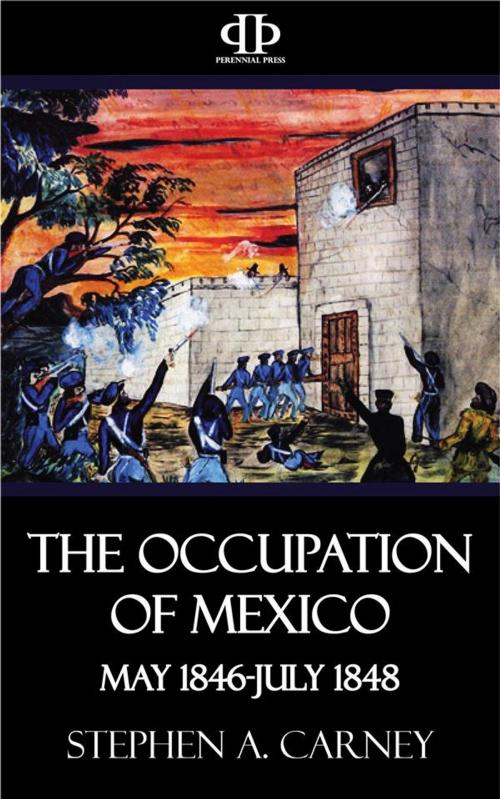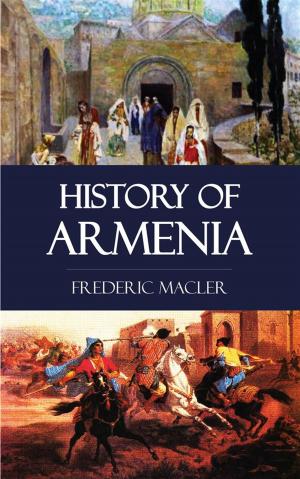The Occupation of Mexico - May 1846-July 1848
Nonfiction, History, Americas, Mexico, United States, 19th Century, Military| Author: | Stephen A. Carney | ISBN: | 9781531209537 |
| Publisher: | Perennial Press | Publication: | February 15, 2016 |
| Imprint: | Language: | English |
| Author: | Stephen A. Carney |
| ISBN: | 9781531209537 |
| Publisher: | Perennial Press |
| Publication: | February 15, 2016 |
| Imprint: | |
| Language: | English |
The Mexican War altered the United States and its history. During eighteen months of fighting, the U.S. Army won a series of decisive battles, captured nearly half of Mexico's territory, and nearly doubled the territories of the United States. Initially, three U.S. Army forces, operating independently, accomplished remarkable feats during the conflict. One force-under Brig. Gen. Zachary Taylor-repelled initial Mexican attacks at Palo Alto and Resaca de la Palma, north of the Rio Grande. Subsequently, Taylor's force crossed the river and advanced into northern Mexico, successfully assaulted the fortified town of Monterrey, and-although heavily outnumbered-defeated Mexico's Army of the North at Buena Vista.
Concurrently, Col. (later Brig. Gen.) Stephen W Kearny led a hardened force of dragoons on an epic march of some 1,000 miles from Fort Leavenworth, Kansas, across mountains and deserts to the California coast. Along the way, Kearny captured Santa Fe in what is now New Mexico and, with the help of the U.S. Navy and rebellious American immigrants, secured major portions of California.
Maj. Gen. Winfield Scott directed the third and decisive campaign of the war. Scott's army made a successful amphibious landing from the Gulf of Mexico at the port of Veracruz, which was captured after a twenty-day siege. Scott then led his army into the interior of Mexico with victories at Cerro Gordo, Contreras, Churubusco, Molino del Rey, and Chapultepec, ending the campaign and ultimately the war with the seizure of Mexico City.
The conflict added approximately one million square miles of land to the United States, including the important deep-water ports of coastal California, and it gave the Regular Army invaluable experience in conventional operations. Yet, the Mexican War consisted of more than a series of conventional engagements, and no formal armistice was reached until long after the capture of Mexico City. Rather, the Army had to conduct a "rolling occupation," thereby serving as administrators over the captured territory as the Army's frontline units continued to pursue conventional Mexican forces...
The Mexican War altered the United States and its history. During eighteen months of fighting, the U.S. Army won a series of decisive battles, captured nearly half of Mexico's territory, and nearly doubled the territories of the United States. Initially, three U.S. Army forces, operating independently, accomplished remarkable feats during the conflict. One force-under Brig. Gen. Zachary Taylor-repelled initial Mexican attacks at Palo Alto and Resaca de la Palma, north of the Rio Grande. Subsequently, Taylor's force crossed the river and advanced into northern Mexico, successfully assaulted the fortified town of Monterrey, and-although heavily outnumbered-defeated Mexico's Army of the North at Buena Vista.
Concurrently, Col. (later Brig. Gen.) Stephen W Kearny led a hardened force of dragoons on an epic march of some 1,000 miles from Fort Leavenworth, Kansas, across mountains and deserts to the California coast. Along the way, Kearny captured Santa Fe in what is now New Mexico and, with the help of the U.S. Navy and rebellious American immigrants, secured major portions of California.
Maj. Gen. Winfield Scott directed the third and decisive campaign of the war. Scott's army made a successful amphibious landing from the Gulf of Mexico at the port of Veracruz, which was captured after a twenty-day siege. Scott then led his army into the interior of Mexico with victories at Cerro Gordo, Contreras, Churubusco, Molino del Rey, and Chapultepec, ending the campaign and ultimately the war with the seizure of Mexico City.
The conflict added approximately one million square miles of land to the United States, including the important deep-water ports of coastal California, and it gave the Regular Army invaluable experience in conventional operations. Yet, the Mexican War consisted of more than a series of conventional engagements, and no formal armistice was reached until long after the capture of Mexico City. Rather, the Army had to conduct a "rolling occupation," thereby serving as administrators over the captured territory as the Army's frontline units continued to pursue conventional Mexican forces...















